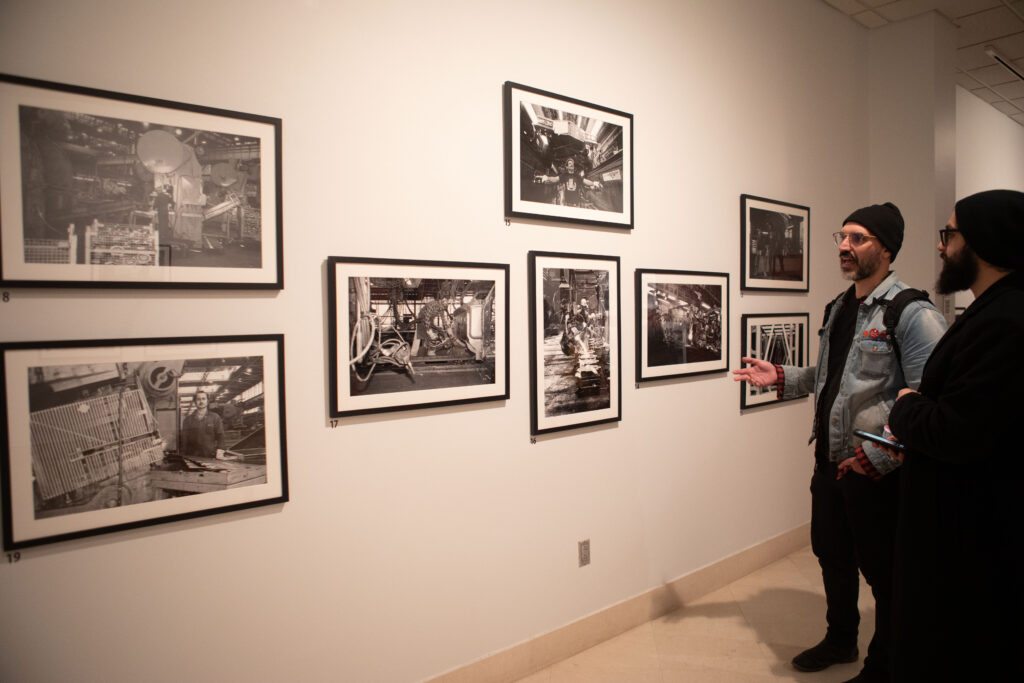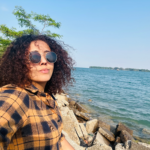
What does it mean to see yourself in history? To recognize your community not as an afterthought but as central to the American experience? Walking through Seeing the Southend, the latest exhibit at the Arab American National Museum, I found myself asking these questions. The photos—documenting the Yemeni and Lebanese community in Dearborn during the 1970s and 1980s—are not sensational. They are not about war, displacement, or suffering. They are about life. Ordinary, mundane, deeply familiar life.
The Southend, a tight-knit working-class immigrant neighborhood, has always been a place of transition—both for those who arrive and those who leave their imprint before moving on. And yet, so little of this history has been visually recorded. Enter Tony Maine, a white photographer who, through time, trust, and the understanding that he was capturing something rare, built relationships with the people he photographed. I spoke with him about his process, and he shared how a community friend once gave him a note in Arabic to show to anyone questioning his presence. It worked every time. What does it say about the Southend that a simple piece of paper could grant an outsider access?
 And yet, these photos do not exoticize. Maine didn’t stage his subjects as foreign or “other.” He captured them as they were—at home, in motion, adapting. He shot what called to him, and in doing so, he unknowingly documented something profound: the ultimate privilege is to define oneself. In these millisecond moments, the people in these photos stepped into that privilege, whether they were aware of it or not.
And yet, these photos do not exoticize. Maine didn’t stage his subjects as foreign or “other.” He captured them as they were—at home, in motion, adapting. He shot what called to him, and in doing so, he unknowingly documented something profound: the ultimate privilege is to define oneself. In these millisecond moments, the people in these photos stepped into that privilege, whether they were aware of it or not.
I think of the children—grinning, charming, flexing for the camera. The young girl dressed in her finest, presenting herself to be seen. The soccer team, mid-argument, deciding the name of their team—because even that small act, choosing what to call themselves, was a statement of identity. And I think of the Yemeni autoworkers, a robust collection of images. I won’t forget the stance of a group of Yemeni men, pausing their lunch break, food in hand, to pose together. They are not in motion, not caught off guard. They are standing, proud, taking up space. How often do we see images of Arab men like this—not as threats, not as victims, but simply as dignified workers, aware of their worth?
The Southend was not just a place of work and family, but of resistance. These images bear evidence of a community conscious of the world beyond its streets. One photo shows a march, a poster reading “Down with Zionism and Imperialism.” In the 1980s, this was the call. Today, in 2025, it remains just as urgent. We see the same struggle against the violent U.S. backed Israeli military forces of imperialism in Gaza, in larger occupied Palestine. These images remind us that history does not move in isolation. These streets, these voices, have been raised before.
What does it mean for a community to document itself? And what happens when someone else does it for them? These questions sit with me as I prepare to moderate a panel with community leaders about the exhibit. I will listen, I will ask, and I will hold onto the knowledge that the Southend—our Southend—is not just a place of the past. It is a story still being told.
Learn more about Seeing the Southend and purchase a set of postcards featuring photos from the exhibit.
 Rasha Almulaiki
Rasha Almulaiki
Adala PR Agency LLC
